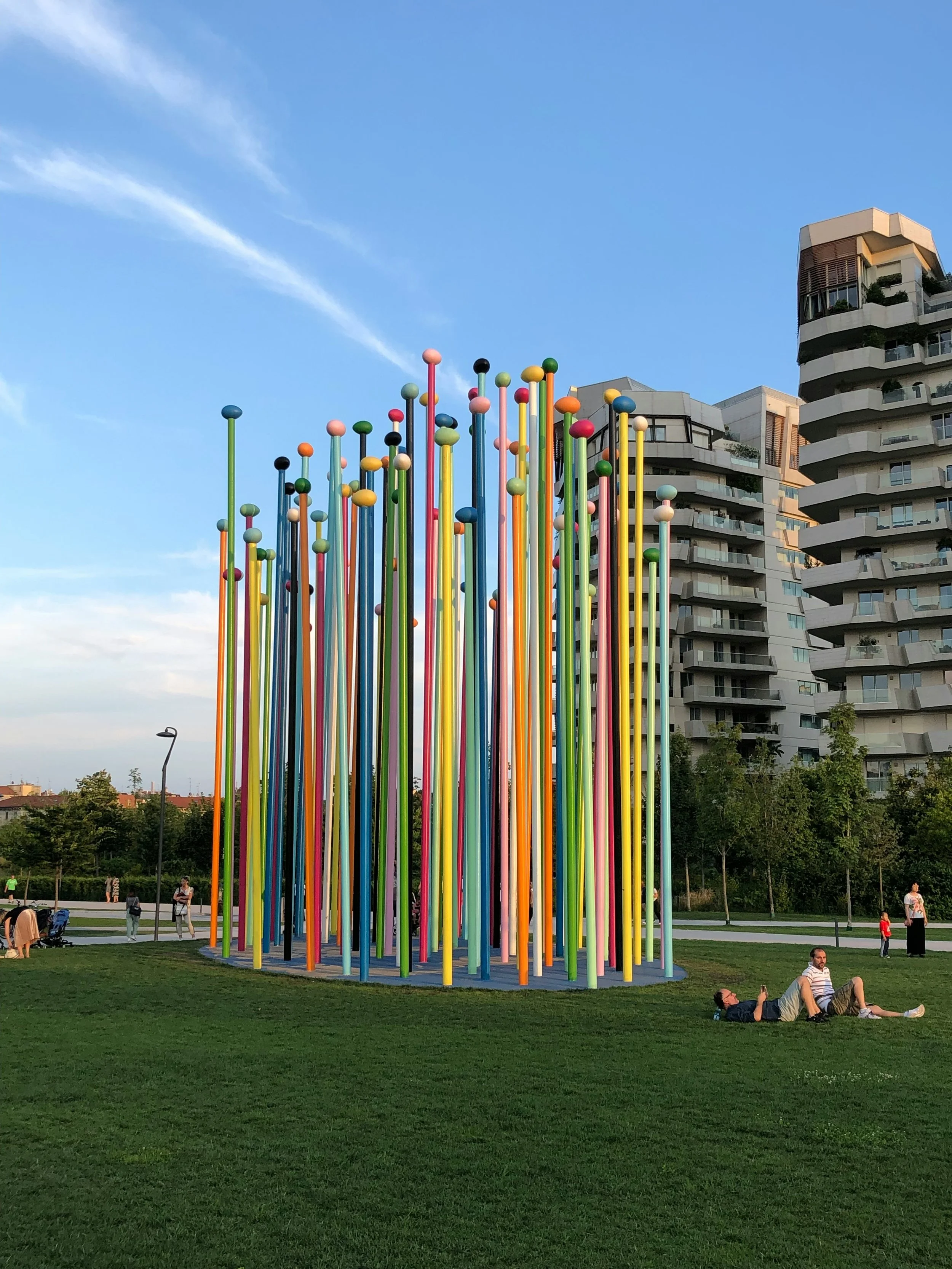Designing Joy
Architects and designers tend to revere the austere aesthetics and modern, minimal moments, and I’m certainly guilty of contributing. A colleague recently sent over an unapologetically colorful TED Talk that reminded me of the more playful nature of space. Ingrid Fetell Lee’s ‘Where Joy Hides and How to Find It” is both enlightening and bright. She breaks down the feeling of joy and how, despite the fact that the ‘sharply divided and politically polarized world’ we live in tends to highlight our differences, it’s the joyful things that ‘remind us of the shared humanity we find in our common experience of the physical world.’
From patterns, shapes, and pops of bright color to abundance and multiplicity, joy can be a tangible experience of the physical world — particularly impactful in environments like hospitals, schools, cities, nursing homes, and housing projects where some of our most vulnerable communities live. It’s these physical attributes of joy — texture, pattern, and color — that feed an evolutionary need. In a primal way, the aesthetics of joy were a sign of life and meant survival.
Photo by Mattia Firenze on Unsplash
From patterns, shapes, and pops of bright color to abundance and multiplicity, joy can be a tangible experience of the physical world.
So how can we bring more joy into our spaces? Sahar Samavati and Pieter Desmet from Delft University of Technology put together an incredible guide with 20 ingredients for urban happiness — complete with tips for measuring and key research references. An insightful document that highlights the importance of identity, memorability, and connectivity while illustrating that public space should be an experience that engages all of the senses.
While we wouldn’t recommend tossing every color from a Sherwin Williams color chart into a project, there is some serious thought that should be given to joyful, playful, and wonderful places that reintroduce a feeling of excitement, lightness, and elevation.

